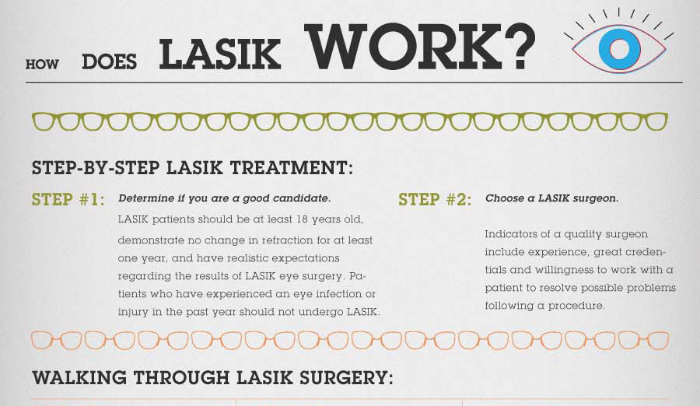Thinking Of SMILE Surgical Procedure? Take A Look At Important Aspects And Understandings That Can Equip You To Make An Educated Decision About Your Vision'S Future
Thinking Of SMILE Surgical Procedure? Take A Look At Important Aspects And Understandings That Can Equip You To Make An Educated Decision About Your Vision'S Future
Blog Article
Material By-Frederiksen Storm
If you're considering SMILE eye surgical procedure, consider this: are you prepared to welcome prospective aesthetic freedom, or does the thought of any threats make you wait? https://healthblog.uofmhealth.org/eye-health/3-ways-genetic-counselors-provide-clarity-on-eye-disease will hinge on a mindful equilibrium of evaluating the advantages versus the unpredictabilities. It's critical to dig deeper into the nuances of SMILE surgical treatment to make an enlightened choice that lines up with your aesthetic goals.
Recognizing SMILE Eye Surgery
When taking into consideration SMILE Eye Surgical treatment, it is very important to comprehend the treatment and its benefits. SMILE, which means Tiny Incision Lenticule Extraction, is a minimally invasive laser eye surgery that fixes usual vision problems like myopia (nearsightedness).
Throughout the procedure, your eye cosmetic surgeon will certainly use a femtosecond laser to develop a little cut in your cornea. Through this cut, a small disc of cells called a lenticule is gotten rid of, reshaping the cornea and remedying your vision.
One of the essential benefits of SMILE Eye Surgical procedure is its quick recovery time. Numerous people experience improved vision within a day or 2 after the treatment, with marginal discomfort.
In https://squareblogs.net/barabara821barbar/life-after-laser-vision-modification-what-to-anticipate-and-also-exactly-how , SMILE is recognized for its high success rate in providing lasting vision correction. Unlike LASIK, SMILE doesn't call for the creation of a flap in the cornea, reducing the danger of difficulties and allowing for an extra stable corneal structure post-surgery.
Recognizing the procedure and its benefits is critical when considering SMILE Eye Surgical procedure for vision correction.
Pros and Cons of SMILE
Considering SMILE Eye Surgery for vision adjustment comes with different advantages and potential downsides.
Among the main pros of SMILE is its minimally invasive nature, as it entails a little cut and typically leads to fast healing times. The procedure is likewise recognized for triggering marginal discomfort and dry eye symptoms post-surgery contrasted to various other vision improvement techniques. Additionally, SMILE has actually been revealed to provide exceptional aesthetic results, with many patients accomplishing 20/20 vision or better.
On the other hand, a potential disadvantage of SMILE is that it may not appropriate for people with extreme refractive mistakes, as the therapy range is somewhat minimal compared to LASIK. An additional consideration is that the knowing contour for doctors carrying out SMILE can impact the schedule of knowledgeable service providers in particular areas.
It is necessary to weigh these advantages and disadvantages very carefully when making a decision if SMILE is the appropriate option for your vision correction requirements.
Determining Eligibility for SMILE
To determine if you're eligible for SMILE eye surgical procedure, your ophthalmologist will certainly conduct a thorough evaluation of your eye wellness and vision requirements. Throughout this examination, variables such as the security of your vision prescription, the density of your cornea, and the overall wellness of your eyes will certainly be examined.
Usually, prospects for SMILE more than 22 years of ages, have a stable vision prescription for at the very least a year, and have healthy corneas without conditions like keratoconus.
Your ophthalmologist will certainly also consider your total eye health and wellness, any existing eye problems, and your lifestyle needs to establish if SMILE is the appropriate option for you. It's important to interact any type of details aesthetic requirements or worries you may have throughout this evaluation to make sure that the therapy lines up with your expectations.
If you aren't eligible for SMILE, your optometrist may advise alternate vision correction options that far better suit your specific needs and eye health and wellness status.
Conclusion
Ultimately, deciding whether SMILE eye surgical procedure is right for you calls for careful consideration of your individual eye wellness and visual requirements. Seek advice from your eye doctor to establish your qualification for the procedure and evaluate the potential advantages and downsides. Keep in Cataract Lens Replacement to connect any concerns or inquiries you may have during the assessment procedure to make an enlightened choice regarding your vision correction options.
